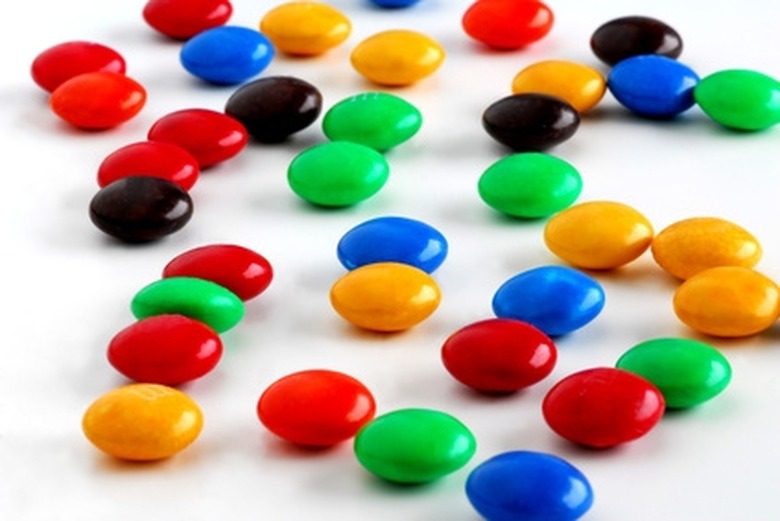Science Projects That Use M&M's
Science projects that use M&M's are often simultaneously amusing and delicious. Even if you don't eat your M&M's after experimenting, however, designing a project that uses M&Ms can help you learn a lot about many branches of science and mathematics. If you're properly prepared and understand your experiment, you can explore in fields such as statistics, biology and even thermodynamics with nothing more than hard-shelled candy.
Melting M&M's
This science project's goal is to decide what color of M&M will melt fastest or if there is even a difference. For the experiment, you'll need at least five of each color of M&M, a paper plate and glue to attach the M&M's to the plate, as well as a microwave and jar lid. The simplest way to perform it is to set five M&M's of each color on individual plates and microwave them 20 seconds at a time, taking notes as to which colors seem to melt fastest (using five M&M's lessens the chance for errors).
M&M Predators and Prey
You can "hunt" M&M's by putting together a project that takes advantage of their variance in color. Using a stopwatch, different colored sheets of construction paper (a sheet for each color of M&M) and a few friends willing to eat M&M's, you can find out exactly why camouflage is so important to animals in the wild.
Statistics and M&M's
This next science project that uses M&M's is heavily based on math, specifically statistics and probabilities. Its goal is to determine how many times you need to dig around in a jar to pull out a certain color M&M and compare to the calculated probability of this occurrence. All you need is a jar and a bag of M&M's (the bigger the better). By counting out the number of each color of M&M's and the total number of M&M's, you can calculate the odds of getting any one color per draw from the jar, and then actually experiment and start pulling M&M's from the jar.
Packing M&M's
If you want to determine how spatially relevant M&M's are, then you can do this experiment. You can first use a graduated cylinder and 80 ml of water to determine the average volume of an M&M. Then, take a box smaller than a shoe box and measure its volume using a ruler. Now you can just experiment with different arrangements and see if there are more or less efficient ways of packing the box full of M&M's.
Cite This Article
MLA
Massey, Brian. "Science Projects That Use M&M's" sciencing.com, https://www.sciencing.com/science-projects-use-mms-8050719/. 24 April 2017.
APA
Massey, Brian. (2017, April 24). Science Projects That Use M&M's. sciencing.com. Retrieved from https://www.sciencing.com/science-projects-use-mms-8050719/
Chicago
Massey, Brian. Science Projects That Use M&M's last modified August 30, 2022. https://www.sciencing.com/science-projects-use-mms-8050719/
